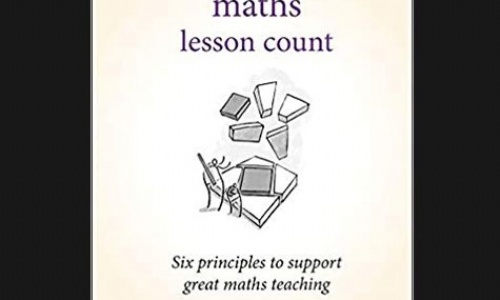MAKING EVERY MATHS LESSON COUNT

Review by Claire Ollerenshaw
‘Making every Maths lesson count’ outlines six principles to support great maths teaching. It is a book for anyone involved in maths education and I wholeheartedly agree with the suggestion that ‘whether you are just starting out or have been teaching for 30 years, you will find something of value in ‘Making Every Maths Lesson Count’.
The six principles that are outlined in this book are:
- Challenge
- Explanation & Modelling
- Practice
- Questioning
- Feedback
Across these six principles are 52 ‘high-impact strategies designed to streamline teacher workload and ramp up the level of challenge in the classroom.’ All of these are discussed in an engaging and accessible way – I found myself taking photos of various examples and questions within the book so that I could try them out in my classroom. ‘Making every Maths lesson count’ is a bit like a reference book – one which you might dip back into again and again.
This book is a practical guide for anyone wishing to help their students become better mathematicians. It provides a wealth of ideas to try in the classroom; some are old favourites such as the use of the mini whiteboard and some draw on old and perhaps forgotten resources from Don Steward; others are newer ideas such as ‘silent modelling’ and ‘low stakes quizzes’. All of the strategies and ideas discussed are written alongside the theory and research that goes with them, often referencing the well-respected research of John Mason and Anne Watson.
Of particular interest to me was the discussion of problem-solving tasks. It is suggested that when we use the term ‘problem solving’, we have different ideas of what is meant and so to provide some clarity, ‘we should refer to all tasks as problems and define problem solving to mean solving ‘unfamiliar problems’, whereby unfamiliar problems are problems that students possess the requisite knowledge to solve but have not yet met.’ This is illustrated beautifully in John Mason’s ‘problems on a familiarity spectrum’ which show how students may move from a seemingly simple multiplication to a complex question involving areas of overlapping circles.
Some other strategies discussed which have particularly resonated with me as being ones in which I would like to develop within my own teaching are:
- worked example pairs
- Freyer modelling
- silent modelling
- frequent low stakes quizzing
In summary, this is a book that is easy to read, it can be dipped in and out of between teaching and I would challenge anyone not to be able to find something in here that is exciting to try out in the maths classroom!
